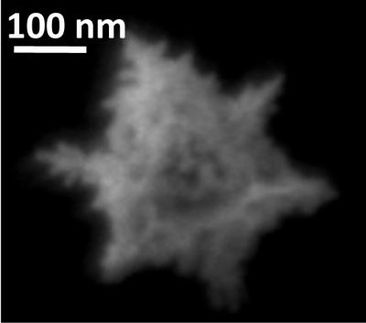Graphene gazing gives glimpse of foundations of universe
Researchers at The University of Manchester have used graphene to measure an important and mysterious fundamental constant - and glimpse the foundations of the universe. The researchers from The School of Physics and Astronomy, led by Professor Andre Geim, have found that the world's thinnest material absorbs a well-defined fraction of visible light, which allows the direct determination of the fine structure constant.
Working with Portuguese theorists from The University of Minho in Portugal, Geim and colleagues report their findings online in the latest edition of Science Express. The paper will be published in the journal Science.
The universe and life on this planet are intimately controlled by several exact numbers; so-called fundamental or universal constants such as the speed of light and the electric charge of an electron. Among them, the fine structure constant is arguably most mysterious. It defines the interaction between very fast moving electrical charges and light - or electromagnetic waves - and its exact value is close to 1/137.
Prof Geim, who in 2004 discovered graphene with Dr Kostya Novoselov, a one-atom-thick gauze of carbon atoms resembling chicken wire, says: "Change this fine tuned number by only a few percent and the life would not be here because nuclear reactions in which carbon is generated from lighter elements in burning stars would be forbidden. No carbon means no life."
Geim now working together with PhD students Rahul Nair and Peter Blake have for the first time produced large suspended membranes of graphene so that one can easily see light passing through this thinnest of all materials.
The researchers have found the carbon monolayer is not crystal-clear but notably opaque, absorbing a rather large 2.3 percent of visible light. The experiments supported by theory show this number divided by Pi gives you the exact value of the fine structures constant. The fundamental reason for this is that electrons in graphene behave as if they have completely lost their mass, as shown in the previous work of the Manchester group and repeated by many researchers worldwide. The accuracy of the optical determination of the constant so far is relatively low, by metrological standards.
But researchers say the simplicity of the Manchester experiment is "truly amazing" as measurements of fundamental constants normally require sophisticated facilities and special conditions. With large membranes in hand, Prof Geim says it requires barely anything more sophisticated then a camera to measure visual transparency of graphene.
Most read news
Other news from the department science

Get the analytics and lab tech industry in your inbox
From now on, don't miss a thing: Our newsletter for analytics and lab technology brings you up to date every Tuesday. The latest industry news, product highlights and innovations - compact and easy to understand in your inbox. Researched by us so you don't have to.



![[Fe]-hydrogenase catalysis visualized using para-hydrogen-enhanced nuclear magnetic resonance spectroscopy](https://img.chemie.de/Portal/News/675fd46b9b54f_sBuG8s4sS.png?tr=w-712,h-534,cm-extract,x-0,y-16:n-xl)





















































